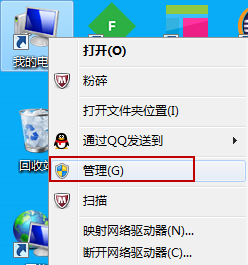編輯:關於Android編程
/**
* 相當於調用TextView.setText
*
*/
public void setTextViewText(int viewId, CharSequence text) {
setCharSequence(viewId, "setText", text);
}
/**
* 調用一個Remoteviews上一個控件參數為CharSequence的方法
*/
public void setCharSequence(int viewId, String methodName, CharSequence value) {
addAction(new ReflectionAction(viewId, methodName, ReflectionAction.CHAR_SEQUENCE, value));
}
/**
* 添加一個Action ,它會在遠程進程調用apply方法的時候執行
*
* @param a The action to add
*/
private void addAction(Action a) {
if (hasLandscapeAndPortraitLayouts()) {
throw new RuntimeException("RemoteViews specifying separate landscape and portrait" +
" layouts cannot be modified. Instead, fully configure the landscape and" +
" portrait layouts individually before constructing the combined layout.");
}
if (mActions == null) {
mActions = new ArrayList();
}
mActions.add(a);
// update the memory usage stats
a.updateMemoryUsageEstimate(mMemoryUsageCounter);
}
上面我們可以看到,在RemoteViews中 有一個叫mActions的列表在維護Action的信息,需要注意的是,這裡靜靜是將Action對象保存了起來了。並未對View進行實際的操作。
接下來我們看RefletctionAction,可以看到,這個表示的是一個反射動作,通過它對View的操作會以反射的方式來調用,其中getMethod就是根據方法名來獲取所需要的Method對象。
@Override
public void apply(View root, ViewGroup rootParent, OnClickHandler handler) {
final View view = root.findViewById(viewId);
if (view == null) return;
Class param = getParameterType();
if (param == null) {
throw new ActionException("bad type: " + this.type);
}
try {
getMethod(view, this.methodName, param).invoke(view, wrapArg(this.value));
} catch (ActionException e) {
throw e;
} catch (Exception ex) {
throw new ActionException(ex);
}
}
接下來我們看RemoteViews的apply方法:
public View apply(Context context, ViewGroup parent, OnClickHandler handler) {
RemoteViews rvToApply = getRemoteViewsToApply(context);
View result;
Context c = prepareContext(context);
LayoutInflater inflater = (LayoutInflater)
c.getSystemService(Context.LAYOUT_INFLATER_SERVICE);
inflater = inflater.cloneInContext(c);
inflater.setFilter(this);
result = inflater.inflate(rvToApply.getLayoutId(), parent, false);
rvToApply.performApply(result, parent, handler);
return result;
}
private void performApply(View v, ViewGroup parent, OnClickHandler handler) {
if (mActions != null) {
handler = handler == null ? DEFAULT_ON_CLICK_HANDLER : handler;
final int count = mActions.size();
for (int i = 0; i < count; i++) {
Action a = mActions.get(i);
a.apply(v, parent, handler);
}
}
}
上面的實現就是遍歷mAction中的Action對象,並且執行它們的apply方法。我們前面看到ReflectionAction的apply就是利用反射機制執行方法,所以,我們可以知道,action#apply其實就是真正執行我們想要的行為的地方。
RemoteViews在通知欄和桌面小部件中的工作過程和上面描述的過程是一樣的,當我們調用RemoteViews的set方法的時候,我們不會更新它們的界面,而是要通過NotificationManager和notify方法和AppWidgetManager的updateAppWidget方法才能更新它們的界面。實際上在AppWigetAManager的updateAppWidget的內部視線中,它們是通過RemoteViews的apply和reapply方法來加載和更新界面的。app會加載並且更新界面,而reapply只會更新界面。通知欄和桌面小插件會在初始化界面的時候調用apply方法,而在後續的更新界面時候會調用reapply方法。
RemoteViews中只支持發起PendingIntent,不支持OnClickListener那種模式,另外,我們需要注意setOnClickPendingIntent、setPendingIntentTemplate以及setOnClickFillIntent它們之前的區別和聯系。首先setOnClickPendingIntent用於給普通View設置單擊事件,因為開銷比較大,所以系統進制了這種方式。其次,如果要給ListView和StackView中的item添加事件,必須要將setPendingIntentTemplate和setOnClickFillIntent組合使用才可以。(使用RemoteViews的setRemoteAdapter 綁定 RemoteViewService)
其他:
前面是使用系統自帶的NotificationManager和AppWidgetManager來使用RemoteViews,那麼除了這兩種情況,我們就不能使用了嗎?肯定不是,我們完全可以自己做NotificationManager和AppWidgetManager一樣的工作。我們可以通過AIDL使用Binder來傳遞RemoteView,也可以通過廣播來傳遞RemoteViews對象。比如我們有2個進程A和B。B可以發送消息給A,然後在A中顯示B所需要顯示的控件。
我們可以創建一個RemoteViews對象,然後把它放入Intent當中,這樣,在廣播接收器我們就能收到這個RemoteViews了。
不過,我們創建RemoteViews的時候,不能直接使用我們的進程上下文來創建。我們可以查看AppWigetHostView的getDefaultView方法:
protected View getDefaultView() {
if (LOGD) {
Log.d(TAG, "getDefaultView");
}
View defaultView = null;
Exception exception = null;
try {
if (mInfo != null) {
Context theirContext = mContext.createPackageContextAsUser(
mInfo.provider.getPackageName(), Context.CONTEXT_RESTRICTED, mUser);
mRemoteContext = theirContext;
LayoutInflater inflater = (LayoutInflater)
theirContext.getSystemService(Context.LAYOUT_INFLATER_SERVICE);
inflater = inflater.cloneInContext(theirContext);
inflater.setFilter(sInflaterFilter);
AppWidgetManager manager = AppWidgetManager.getInstance(mContext);
Bundle options = manager.getAppWidgetOptions(mAppWidgetId);
int layoutId = mInfo.initialLayout;
if (options.containsKey(AppWidgetManager.OPTION_APPWIDGET_HOST_CATEGORY)) {
int category = options.getInt(AppWidgetManager.OPTION_APPWIDGET_HOST_CATEGORY);
if (category == AppWidgetProviderInfo.WIDGET_CATEGORY_KEYGUARD) {
int kgLayoutId = mInfo.initialKeyguardLayout;
// If a default keyguard layout is not specified, use the standard
// default layout.
layoutId = kgLayoutId == 0 ? layoutId : kgLayoutId;
}
}
defaultView = inflater.inflate(layoutId, this, false);
} else {
Log.w(TAG, "can't inflate defaultView because mInfo is missing");
}
} catch (PackageManager.NameNotFoundException e) {
exception = e;
} catch (RuntimeException e) {
exception = e;
}
if (exception != null) {
Log.w(TAG, "Error inflating AppWidget " + mInfo + ": " + exception.toString());
}
if (defaultView == null) {
if (LOGD) Log.d(TAG, "getDefaultView couldn't find any view, so inflating error");
defaultView = getErrorView();
}
return defaultView;
}
由於不在同一個進程中,往往是兩個APP,因此資源是不能直接找到的,所以,我們想要通過id ,解析出布局對象,那麼就需要我們先獲取遠程進程的進程上下文,通過Context的createPackageContextAsUser來獲取Context對象。之後再解析成對應的布局對象。然後就可以使用了。
 Android Volley框架全面解析
Android Volley框架全面解析
Volley簡介我們平時在開發Android應用的時候不可避免地都需要用到網絡技術,而多數情況下應用程序都會使用HTTP協議來發送和接收網絡數據。Androi
 Android動態部署五:如何從插件apk中啟動Service
Android動態部署五:如何從插件apk中啟動Service
經過前面幾篇文章的分析,我們了解到了Google原生是如何拆分apk的,並且我們自己可以通過解析manifest文件,通過創建插件ClassLoader,Resource
 android關鍵組件service服務(一)
android關鍵組件service服務(一)
一、 Service簡介 Service是android 系統中的四大組件之一(Activity、Service、BroadcastReceiver、ContentPr
 monkeyrunner之電腦安裝驅動(5)
monkeyrunner之電腦安裝驅動(5)
在Monkeyrunner做自動化測試時,可以使用模擬器,當然也可以選擇用真機。不過,要想通過電腦來安裝軟件,操作手機,則必須先安裝手機驅動,而且一般手機連接電腦之後,電